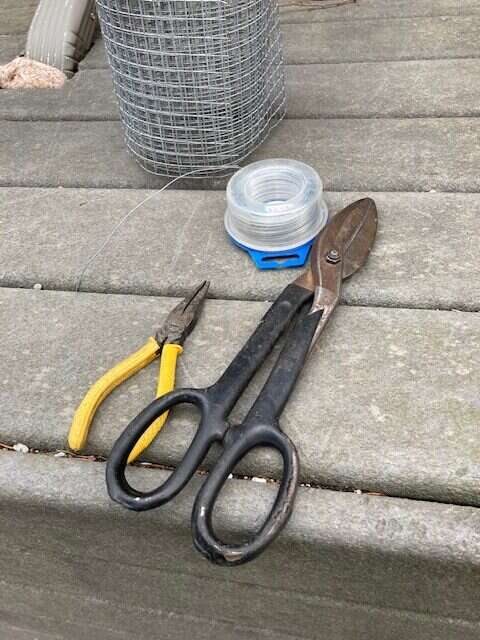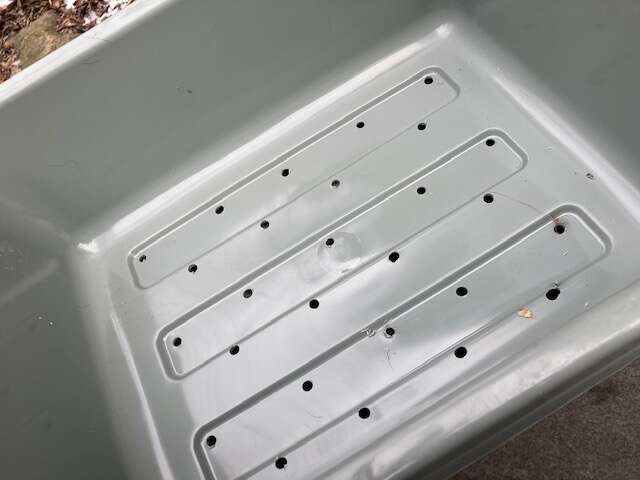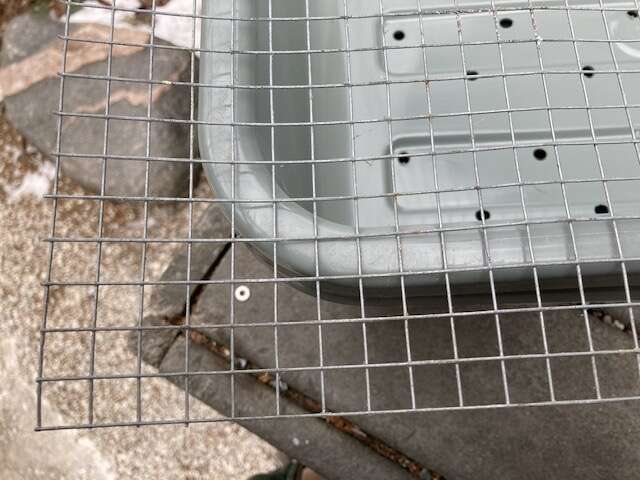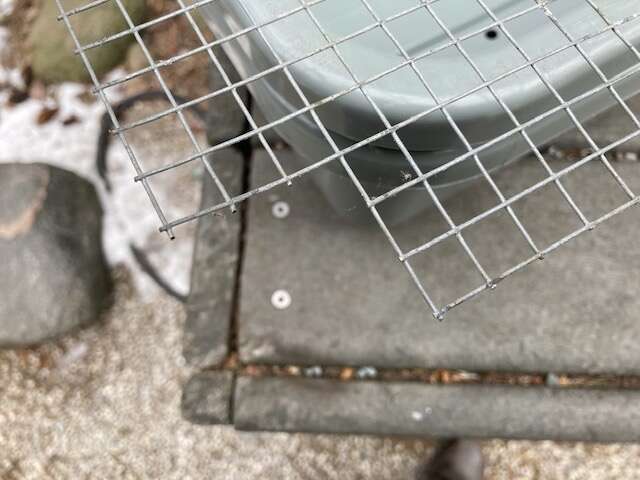Seed orders are coming in, so I thought I would post something about the method I use for sowing seed that can take several years in order to reach a size that is sufficient to pot-on.
Years ago I utilized large seed frames with 4ft x 4ft x18” cells set into the ground. The extreme size of those cells, allowed me to get away with paying little of the attention that one has to devote to individual pots. I rarely had to water, and if need be I could leave the seed or seedlings be for several years. However, I found all that bending over to be exceedingly tiresome. For me the Ah-ha moment came when I spotted some Bus-Boy trays for sale.
I haven’t come across a better container for sowing seeds into that have an extended or multi-staged germination period, as is often required with Paeonia or Trillium seed, and I also use them for sowing tree seeds, in addition to seeds gathered from the cones of Witches Brooms. These Bus-Boy trays are well suited for sowing large batches of seed, such as the 300 – 400 seeds one gets from a single Arisaema sikokianum fruiting head.
What follows is a method that I have used for over a decade to transform these readily available, and durable, plastic bins into miniature seed frames. They large enough to withstand the rapid drying out that smaller pots experience, and yet portable enough to pick up and carry over to a table, so no more bending over to inspect or weed.
Being easy to make and requiring few tools is also a big plus. Here’s what you’ll need.

The warehouse store we frequent sells Bus-Boxes in 2-packs.

Some galvanized hardware cloth (aka wire mesh). I prefer the 1/2” square as apposed to the 1/4”.
Some fine gauge galvanized wire (I like 20 gauge as it’s pliable yet strong).
Some sort of wire-cutters or tin-snips
Needle-nosed pliers.
Drill & smallish bit

I start off by drilling a bunch of drainage holes.

Then unroll the enough hardware cloth so that it extends beyond each edge of the tray by 3 mesh squares, and cut it off from the roll.

Remove each corner of the wire mesh, 3 squares x 3 squares. When all four corners are cut, fold down each side of the wire mesh by, firmly and evenly, pressing the mesh over each side of the tray. Then cut a 5-6” length of wire from the wire spool, and using the needle-nosed pliers, “stitch” the folded-over sides together.

The finished project should look something like this. A tight fitting but removable lid that will allow rain and snow in, while keeping birds, cats, and all manner of rodents out!
Now you are ready to fill your mini seed frame. Remove the lid and fill the tray with whatever mix is suitable for the plants you are going to grow. I fill the trays to within about 1.5” below the top edge of the trays, as the mix will settle over time. Sow the seed, cover with grit, water, and then find an out of the way place to leave the trays outside, where they’ll get rain and snow, as well as bright (but not direct sunlight), and pretty much forget about them. By late Spring or early Summer, if germination has occurred, I’ll remove the lids (if the expanding foliage gets close to reaching the screen). If not, I may not check them again for another week or two.

So long as the trays are not exposed to direct sunlight, I find they last for 5 or 6 years (outside), before they become brittle and break, so I get roughly two 3-year cycles of use from each tray.
Good Luck!
